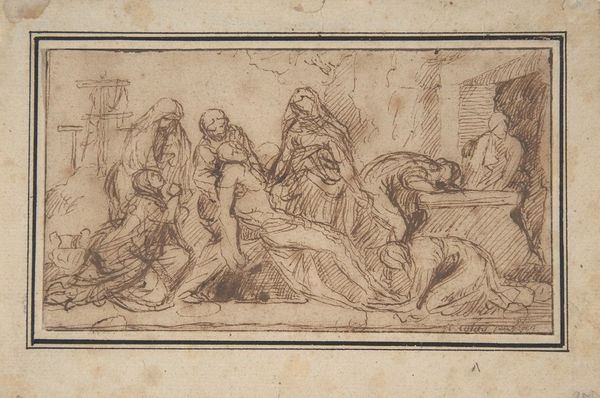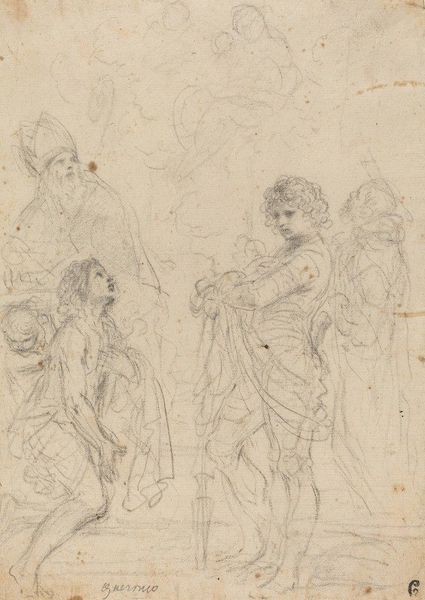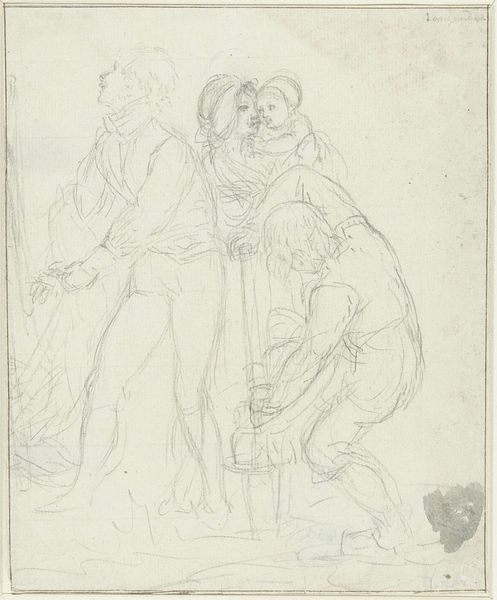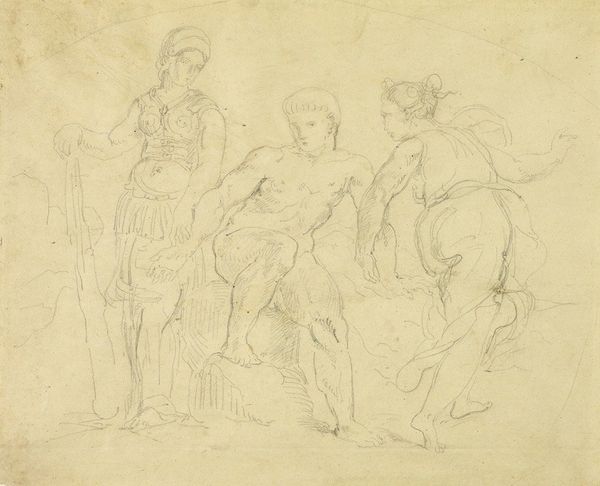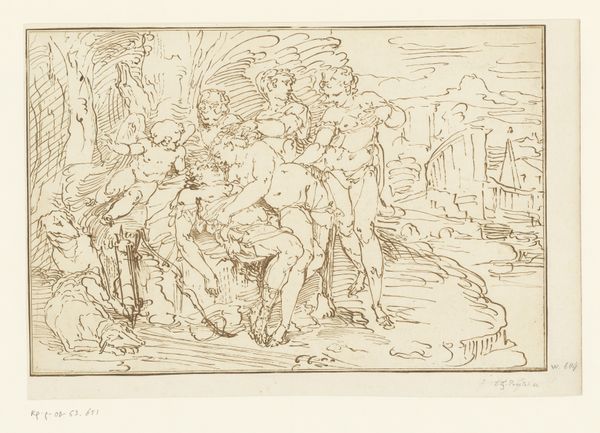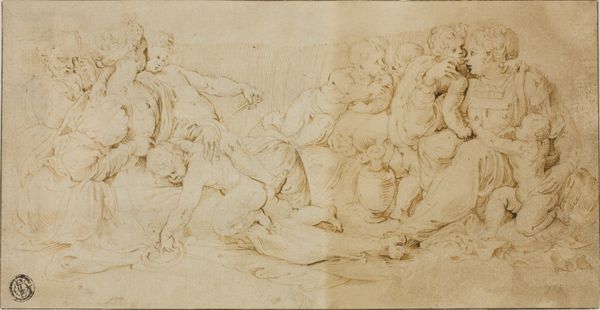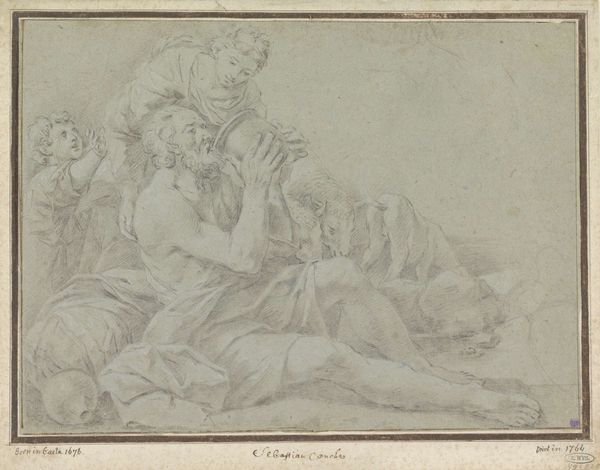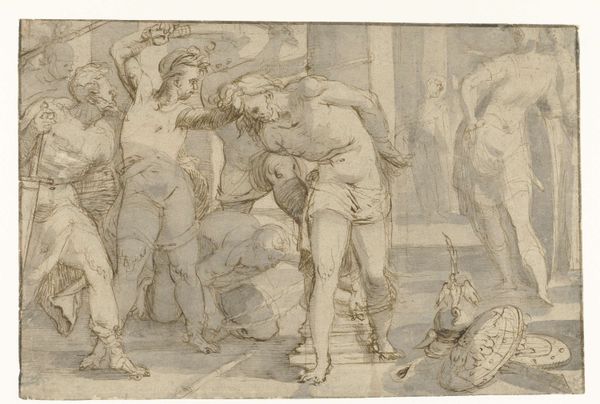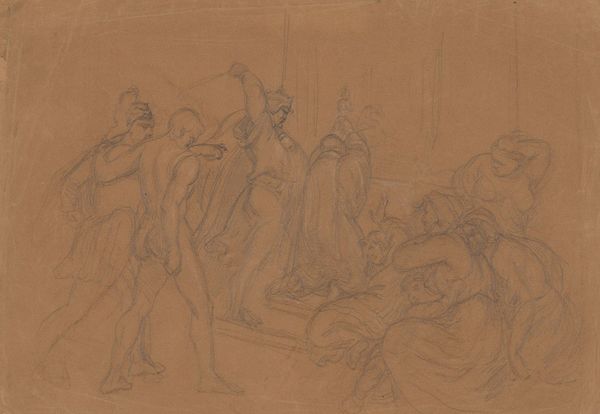
drawing, pencil, graphite
#
drawing
#
pencil sketch
#
figuration
#
romanticism
#
pencil
#
line
#
graphite
#
history-painting
Dimensions: height 228 mm, width 354 mm
Copyright: Rijks Museum: Open Domain
Editor: So, this is Anne-Louis Girodet's "Dido op de brandstapel gelegd en beweend," created between 1810 and 1824. It's a graphite and pencil drawing, quite a delicate piece. The scene is so full of emotion. What's your take? Curator: The swirls and lines and wisps just grab you, don't they? I mean, Dido. Talk about a character who feels. This isn't just a drawing of a historical event; it’s about those moments when our own narratives crumble, when betrayal sears so deeply it rewrites our very being. What strikes you most about the composition itself? Editor: The way everyone is gathered around her, almost collapsing into her space... but the lines are all so light. It's not heavy the way you'd expect a death scene to be. Curator: Precisely. Girodet masterfully uses line to express grief's ephemeral nature, how loss can feel both intensely present and strangely distant. Do you think that's reflective of a broader sensibility within the Romantic movement? Editor: Definitely! This seems like a textbook example of Romanticism, that intense focus on feeling and the power of human emotion. The focus is so squarely on the drama and the...the passion of the scene. Curator: Exactly! The story goes, poor Dido took her life because Aeneas sailed away. Classic love story, tragic ending. But the artistry isn’t merely relaying a story; it is inviting us to participate in Dido's final, fiery soliloquy on loss. Do you get a sense of that participation, do you feel drawn in as a viewer? Editor: Yeah, totally. At first, it just looked like a lot of people in classical garb, but thinking of it as this raw, almost private moment really shifts everything. Curator: It does, doesn’t it? This work reminds us that even in depictions of history, it's the whisper of shared human experience that truly resonates across centuries. Thanks for pointing that out! Editor: This was great. Now, I see how personal feelings are a big thing in artwork.
Comments
No comments
Be the first to comment and join the conversation on the ultimate creative platform.
